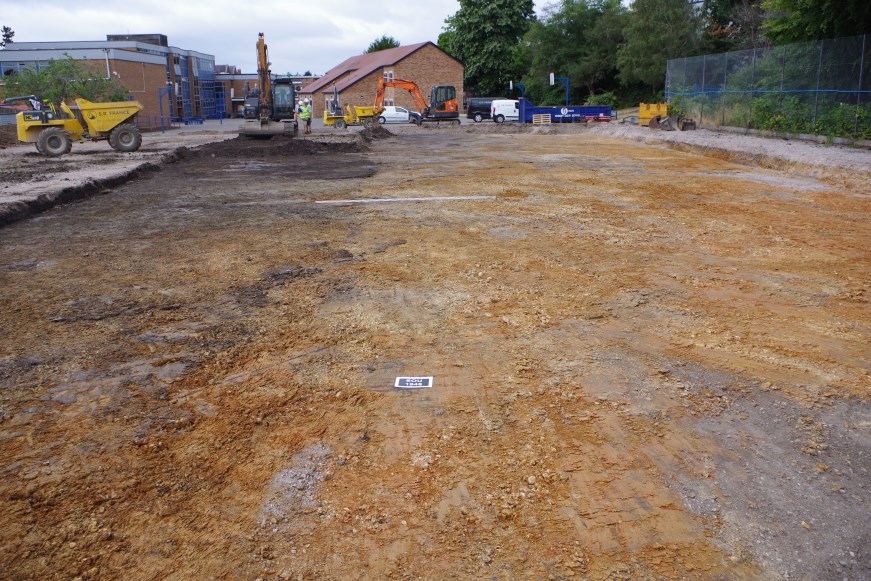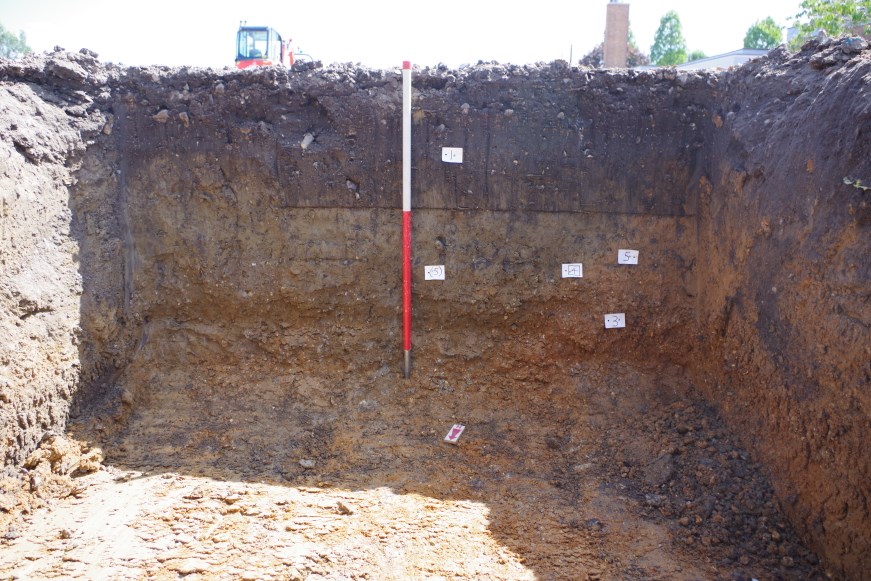Southampton Archaeology Case Studies – Upper Shirley High School
An archaeological watching brief at Upper Shirley High School, Southampton. Aiding the continued expansion of Southampton’s education sector.
Planning permission was sought for the redevelopment of existing external sports courts with erection of a sports hall building with ancillary facilities at Upper Shirley High School, Bellemoor Road, Southampton. The condition of a watching brief with provision to excavate was included in the conditions. This was because the site was situated on River Terrace 4 within the Test Valley, which has produced numerous prehistoric flint hand axes.

View looking across the site

Typical trench section
Southampton Archaeology was commissioned to prepare the Written Scheme of Investigation (WSI) and carry out the watching brief on the ground works. We prepared the WSI that set out a methodology for the archaeological works, along with a synthesis of the archaeological and historical research of the local area. This utilised the Historic Environment Record (HER) held by the Southampton City Council Planning Department and assessed how the development would impact the heritage assets. This was approved by the Planning Archaeologist and work commenced.
The watching brief consisted of an archaeologist on site observing the groundworks which included foundation trenches, service trenches and a soakaway. A record of the observations was made, this consisted of photographic, locational, and written records. The River Terrace 4 gravels were exposed in the southwest part of the site, but no signs of hominid activity were seen. The site did provide evidence that allows the boundaries of the Middle/Late Palaeolithic gravels in the Southampton area to be better defined, which will improve understanding of where early human activity may have taken place. A report was written detailing the observations, with our results and conclusions and the conditions were signed off. No further archaeological work was needed, and the development is currently underway.
The staff at Southampton Archaeology are well versed at working on active construction sites during watching briefs and other archaeological interventions. We have a good working relationship with developers and other contractors that allows work to progress on site as normal while archaeological information is being retrieved.


